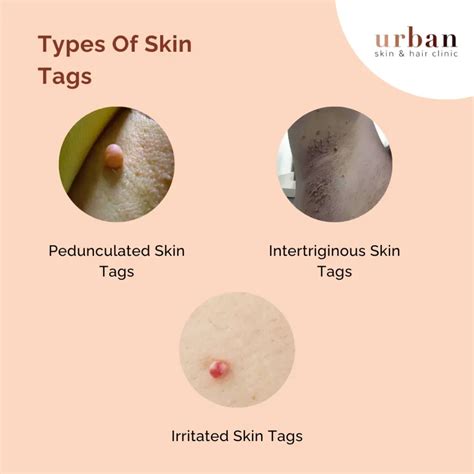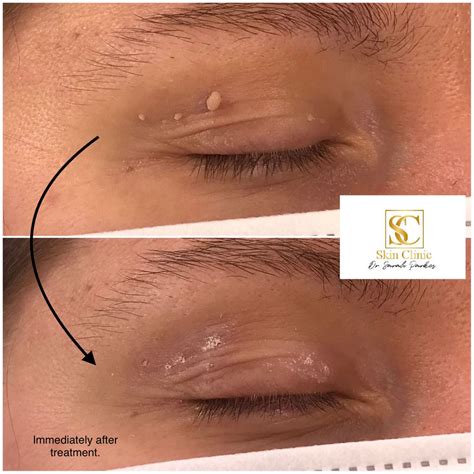Intro
Discover if skin tags fall off naturally. Learn about removal methods, causes, and prevention, including natural remedies and medical treatments for skin tag removal, growths, and lesions.
Skin tags are small, benign growths that can appear on various parts of the body, particularly in areas where skin folds or creases occur. They are relatively common and can be found on the neck, armpits, groin, and eyelids, among other places. While skin tags are generally harmless, they can be unsightly and may cause discomfort or irritation, especially if they become caught on clothing or jewelry. One of the most common questions people have about skin tags is whether they fall off naturally.
In many cases, skin tags do not fall off on their own and may require removal by a healthcare professional. However, it is possible for skin tags to fall off naturally, especially if they become irritated or inflamed. This can happen when a skin tag becomes twisted, cutting off its blood supply, which can cause it to eventually fall off. Nevertheless, relying on natural removal can be unpredictable and may not always be the most effective or safe approach.
The importance of understanding skin tags and their removal cannot be overstated. Not only can skin tags be a source of discomfort or embarrassment, but they can also be a sign of underlying health issues. For instance, people with diabetes or obesity are more likely to develop skin tags. Therefore, it is crucial to address skin tags not just for cosmetic reasons but also to ensure overall health and well-being.
Understanding the causes and characteristics of skin tags is the first step in managing them effectively. Skin tags are typically small, ranging from a few millimeters to a few centimeters in size, and are usually flesh-colored or slightly darker than the surrounding skin. They can be smooth or irregular in texture and may hang from the skin by a stalk-like structure. The exact cause of skin tags is not fully understood, but they are thought to be related to friction, obesity, genetics, and hormonal changes.
What Are Skin Tags?

Skin tags are benign tumors that consist of a core of fibers and ducts, covered by a layer of skin. They are not cancerous and do not typically cause any symptoms other than their appearance. However, in some cases, skin tags can become irritated or inflamed, leading to redness, itching, or bleeding. Understanding what skin tags are and how they form is essential for developing effective strategies for their removal or management.
Characteristics of Skin Tags
Skin tags can vary in appearance, but they are generally characterized by their small size and stalk-like appearance. They can be single or multiple and may appear in clusters. Skin tags are more common in adults than in children and tend to increase in frequency with age. They are also more common in people who are overweight or obese, possibly due to the increased friction and skin folds in these individuals.Why Do Skin Tags Form?

The exact reasons why skin tags form are not fully understood, but several factors are thought to contribute to their development. These include:
- Friction: Skin tags are more common in areas where skin folds or creases occur, suggesting that friction may play a role in their formation.
- Obesity: People who are overweight or obese are more likely to develop skin tags, possibly due to the increased skin folds and friction.
- Genetics: Some people may be more prone to developing skin tags due to their genetic makeup.
- Hormonal changes: Skin tags are more common during pregnancy and in people with hormonal imbalances, suggesting that hormonal changes may also play a role.
Factors That Increase the Risk of Skin Tags
Several factors can increase the risk of developing skin tags. These include: - Age: Skin tags are more common in older adults. - Obesity: Excess weight can increase the risk of skin tags. - Diabetes: People with diabetes are more likely to develop skin tags. - Family history: Having a family history of skin tags can increase the risk. - Pregnancy: Hormonal changes during pregnancy can increase the risk of skin tags.How to Remove Skin Tags

There are several methods for removing skin tags, ranging from home remedies to professional medical procedures. The choice of method depends on the size, location, and number of skin tags, as well as personal preference and comfort level. Some common methods for removing skin tags include:
- Cutting off the skin tag with scissors or a scalpel.
- Freezing the skin tag using liquid nitrogen.
- Burning off the skin tag using electrolysis.
- Tying off the skin tag with dental floss or thread to cut off its blood supply.
Home Remedies for Skin Tag Removal
Several home remedies are claimed to be effective for removing skin tags, although their efficacy and safety may vary. These include: - Tea tree oil: Applying tea tree oil to the skin tag may help to dry it out and cause it to fall off. - Castor oil and baking soda: Mixing castor oil and baking soda to form a paste and applying it to the skin tag may help to remove it. - Banana peel: Rubbing the inside of a banana peel on the skin tag may help to remove it.Preventing Skin Tags

While it may not be possible to completely prevent skin tags, there are several steps that can be taken to reduce the risk of developing them. These include:
- Maintaining a healthy weight: Reducing excess weight can help to reduce the risk of skin tags.
- Avoiding friction: Wearing loose, comfortable clothing and avoiding tight clothing that can cause friction may help to reduce the risk of skin tags.
- Practicing good hygiene: Keeping the skin clean and dry may help to reduce the risk of skin tags.
- Managing diabetes: Controlling blood sugar levels and managing diabetes may help to reduce the risk of skin tags.
Lifestyle Changes to Reduce the Risk of Skin Tags
Making certain lifestyle changes can help to reduce the risk of developing skin tags. These include: - Eating a healthy diet: A diet rich in fruits, vegetables, and whole grains may help to reduce the risk of skin tags. - Exercising regularly: Regular physical activity can help to maintain a healthy weight and reduce the risk of skin tags. - Managing stress: High levels of stress may contribute to the development of skin tags, so finding healthy ways to manage stress, such as through meditation or yoga, may be beneficial.Conclusion and Next Steps

In conclusion, while skin tags can be a nuisance, they are generally harmless and can be removed using a variety of methods. Understanding the causes and characteristics of skin tags, as well as the available removal methods, can help individuals to make informed decisions about their care. By taking steps to prevent skin tags, such as maintaining a healthy weight and practicing good hygiene, individuals can reduce their risk of developing these growths. If you are concerned about skin tags or would like to learn more about removal methods, consult with a healthcare professional for personalized advice and care.
We invite you to share your experiences or ask questions about skin tags in the comments section below. Your input can help others who are dealing with similar issues, and we are here to provide support and guidance. Additionally, if you found this article informative, please consider sharing it with others who may benefit from this information.
What are the common places where skin tags appear?
+Skin tags can appear on various parts of the body, particularly in areas where skin folds or creases occur, such as the neck, armpits, groin, and eyelids.
Can skin tags be a sign of an underlying health issue?
+Yes, skin tags can be a sign of underlying health issues, such as diabetes or obesity. People with these conditions are more likely to develop skin tags.
How can I prevent skin tags from forming?
+While it may not be possible to completely prevent skin tags, maintaining a healthy weight, avoiding friction, practicing good hygiene, and managing diabetes can help to reduce the risk of developing them.
